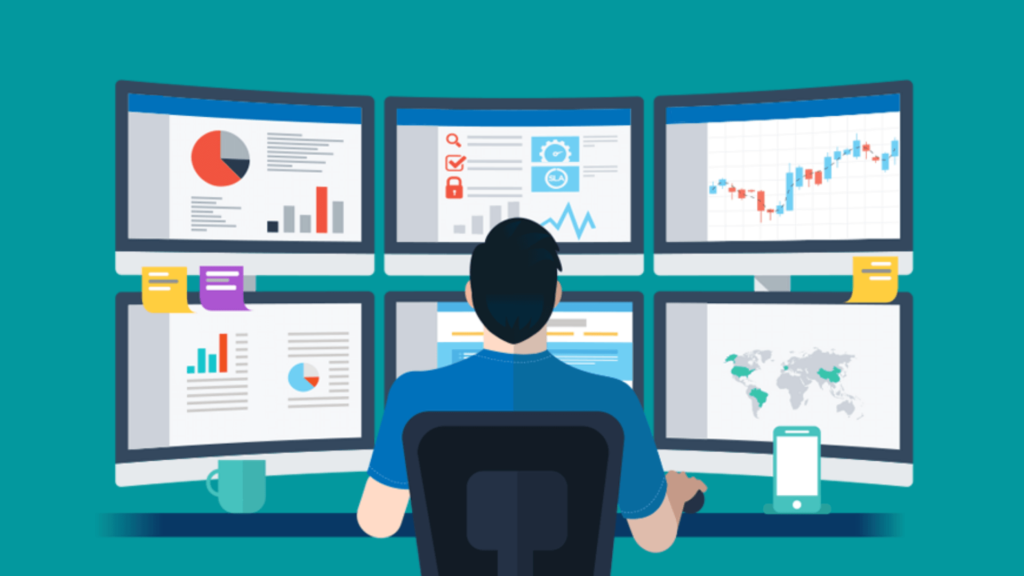A remote employee tracking software or application used by enterprises to monitor the locations and productivity of their distributed workers. Businesses are increasingly opting for this type of technology to ensure that their distributed workers are staying on track and meeting their work obligations because the trend of remote work is becoming increasingly common.
There are several reasons that pose a requirement for installing a remote employee tracker.
- It makes sure about productivity: Through the use of a remote employee tracker, employers may check up on tasks and working hours of their remote workers, and they will be able to ascertain that they will actually work in line with business hours.
- Enhances time management: A remote employee tracker can assist members of the staff in proper time management through monitoring the number of hours taken in doing particular things.
- Promotes Responsibility: Due to the fact that an employee remote tracker tracks the work of an employee, it is very likely to have responsibility on the part of the workers towards it and achieving deadlines.
There are so many variations of remote employee trackers which include the communication platform, project management solution, and time tracking software.
Each of these tools has a different purpose in monitoring and controlling work from remote employees. Selecting a remote employee tracker requires serious consideration about which set of features will be useful for your business.
The most notable aspects include time tracking, activity tracking, project management, and communication tools. Businesses should communicate with their remote workers on a regular basis, set clear expectations with them, and use the data gathered for performance reviews in order to use a remote employee tracker effectively.
Remote employee trackers may raise other issues and difficulties, though, like privacy invasion, a detrimental effect on staff morale, and the possibility of micromanagement. It is crucial to put best practices for utilizing remote employee trackers into place in order to allay these worries. These practices include explaining the goals and advantages, offering assistance and training, and making responsible use of the data gathered.
What Is a Remote Employee Tracker?
Employers can keep an eye on the performance using productivity monitoring software such as Controlio, and activities of their remote workers by using a software application called a remote employee tracker. In remote work environments, it facilitates the monitoring of assignments, hours spent, and general advancement to guarantee responsibility and effectiveness.
Why Is It Important To Use A Remote Employee Tracker?
Effective remote employee tracking has become essential as a result of this change. We’ll talk about the value of a remote employee tracker and its advantages for both businesses and employees in this part. We’ll look at the different ways a remote employee tracker can enhance and simplify the remote work experience, from guaranteeing efficiency to encouraging accountability.
1. Guarantees Efficiency
Establish precise goals and standards for performance to guarantee efficiency.
Set clear objectives and KPIs for tasks involving remote work.
To evaluate performance, promote candid conversation and ask for feedback.
Research indicates that granting autonomy and confidence to remote workers might result in a 35–40% boost in output.
2. Enhances Organization of Time
For jobs and projects, establish precise objectives and deadlines.
To better manage time and distribute resources efficiently, promote the usage of time tracking tools.
Encourage the use of project management software to better manage time by organizing projects, setting deadlines, and managing tasks.
Engage in regular communication with staff members to resolve any issues related to time management and enhance time management in general.
Were you aware? By using remote employee monitors, productivity can increase by 22% on average.
3. Encourages Responsibility
Establish Specific Objectives: To encourage employee accountability, clearly define expectations and outcomes.
Frequent Check-ins: Arrange regular meetings to go over progress and resolve any problems, encouraging responsibility in the workplace.
Feedback Mechanism: Establish a procedure that allows staff members to express their opinions and raise issues, promoting an accountable culture.
Reward System: Give credit to staff members who constantly show responsibility for their work, inspiring others to follow suit.
Final Words
In conclusion, companies may monitor and control the productivity of their remote workers with the use of a remote employee tracker, which can help make sure the workers are fulfilling their work commitments. Businesses can take advantage of this technology and solve any possible issues by selecting the appropriate tracker and installing it in an efficient and responsible manner.

